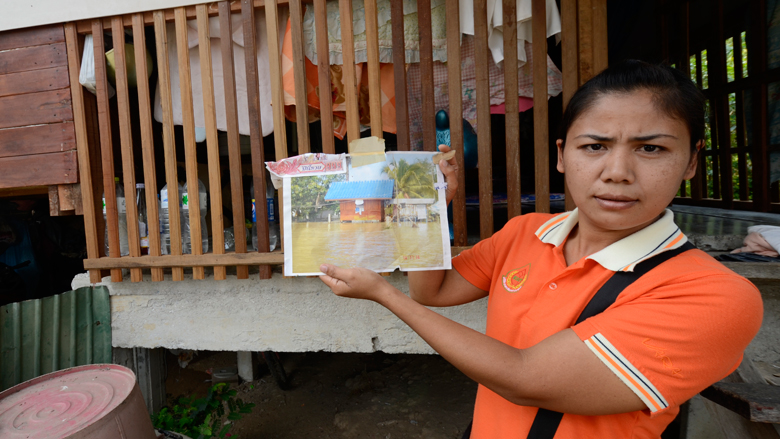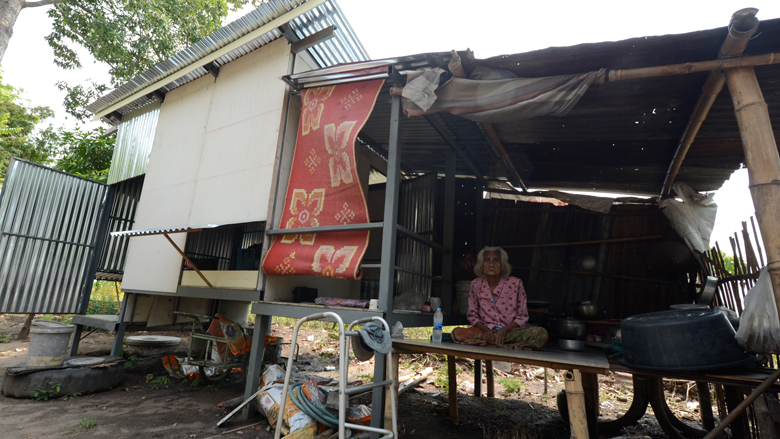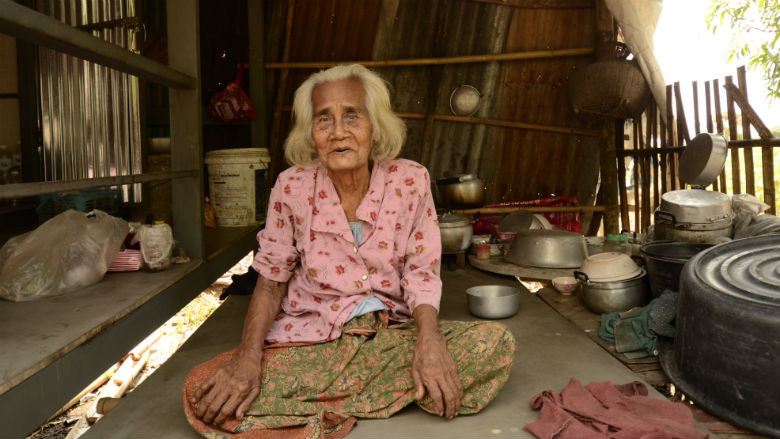Four years ago, urban poor communities in the remote areas of Nakhon Sawan and several other provinces in Thailand suffered the worst floods ever seen in that region. The disaster impacted more than 13 million people in the country and left many neighborhoods underwater for months.
“Water from the Ping River would overflow and flood our communities. It would remain stagnant for 3-5 months without retreating,” says Aramsri Chandrasuksri, a community leader of Wat Khao Jomkiri Nakprot District. “The smell was so bad, it was unbearable.”
Aramsri describes the 2011 floods as a tipping point.
“We used to build sandbag dikes, but it could not protect us,” she shares. “Some homes were flooded up to the rooftops. People had to move up the mountain, sleep in tents, and wait for the water to go down.”
After several attempts to borrow portable water pumps from neighboring villages, they realized that something more permanent was needed to strengthen the resilience of communities in the face of future disasters.
Flood-proofing villages through community mobilization
After gathering community inputs, villagers now work together to flood-proof their villages. Through the Community-based Livelihood Support for the Urban Poor from CODI (Community Organization Development Institute), they are developing projects that will help build a better disaster risk management system for their communities.
In Wat Khao, some of the residents’ priorities included paving roads, building or upgrading drainage ditches, and installing a proper water pump station.
“We have full cooperation like never before because people saw concrete outputs like new roads built with their own hands,” says Sakol Bamrungit, one of the community leaders. “From 20-30 villagers helping, we now have more than 100. We know that it benefits everyone.”



